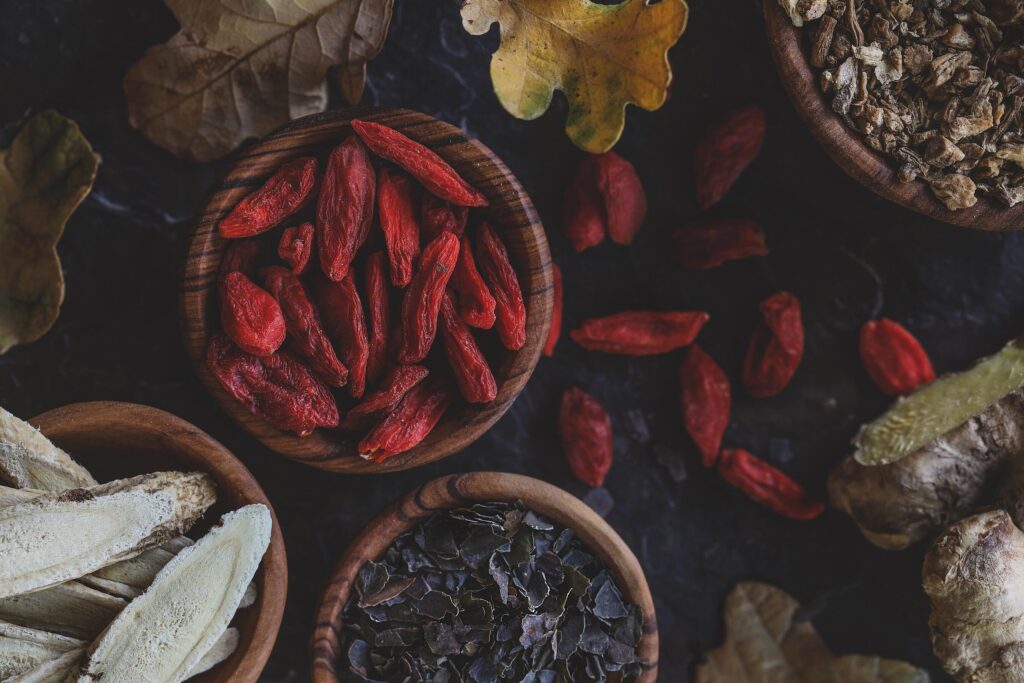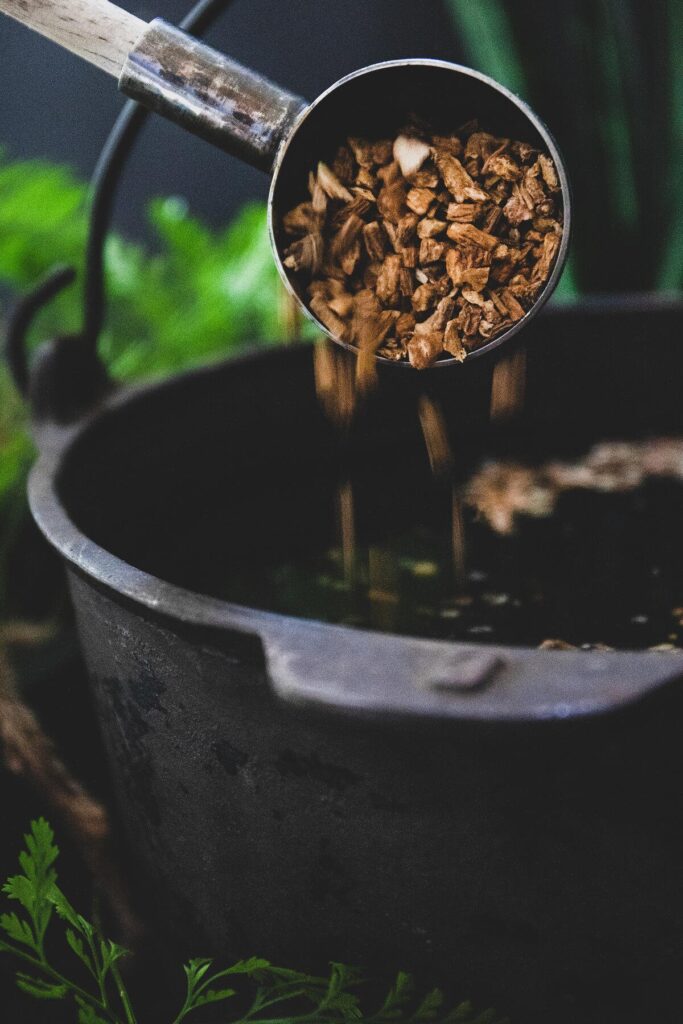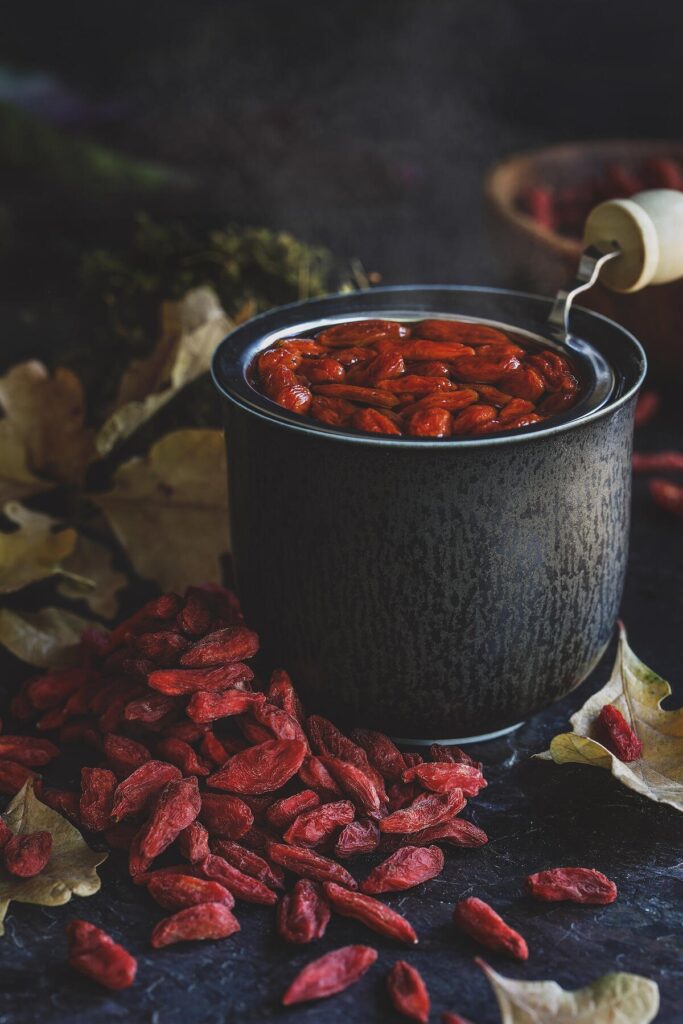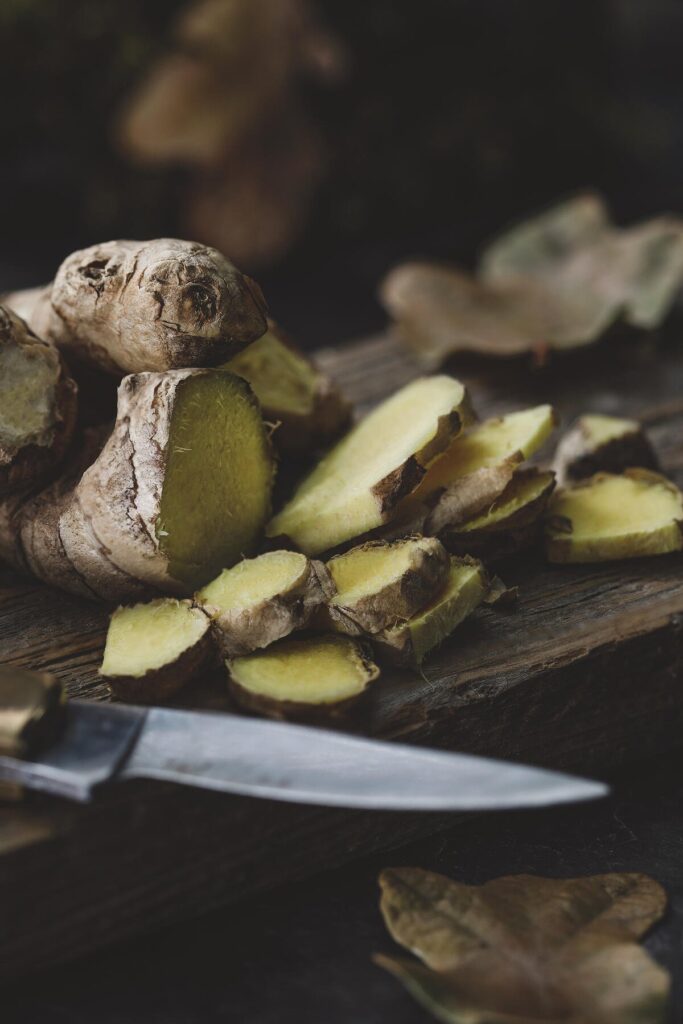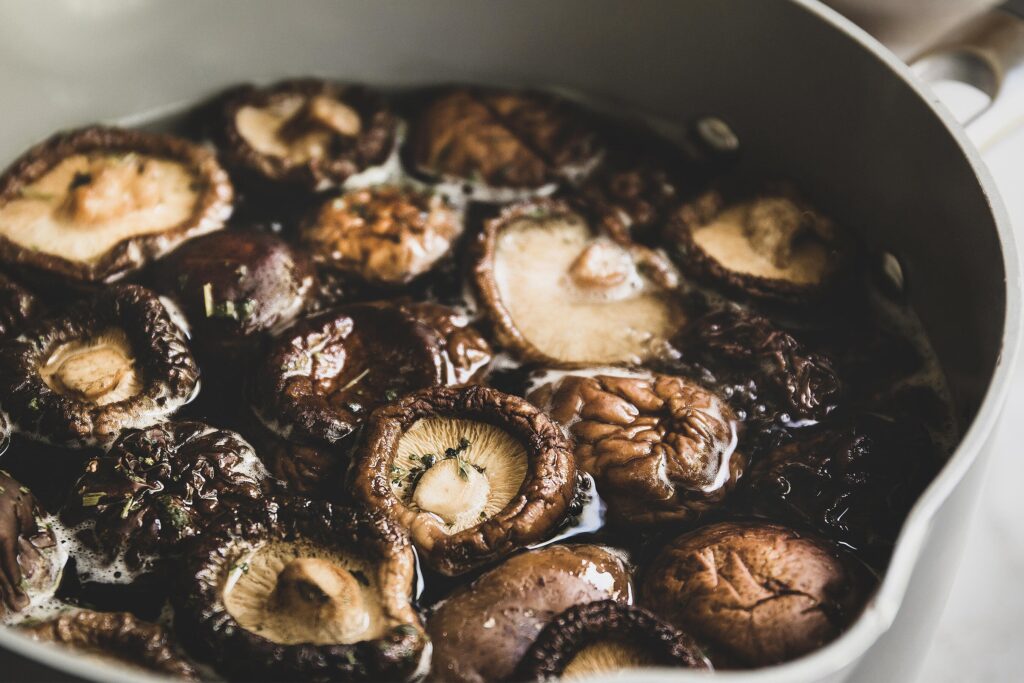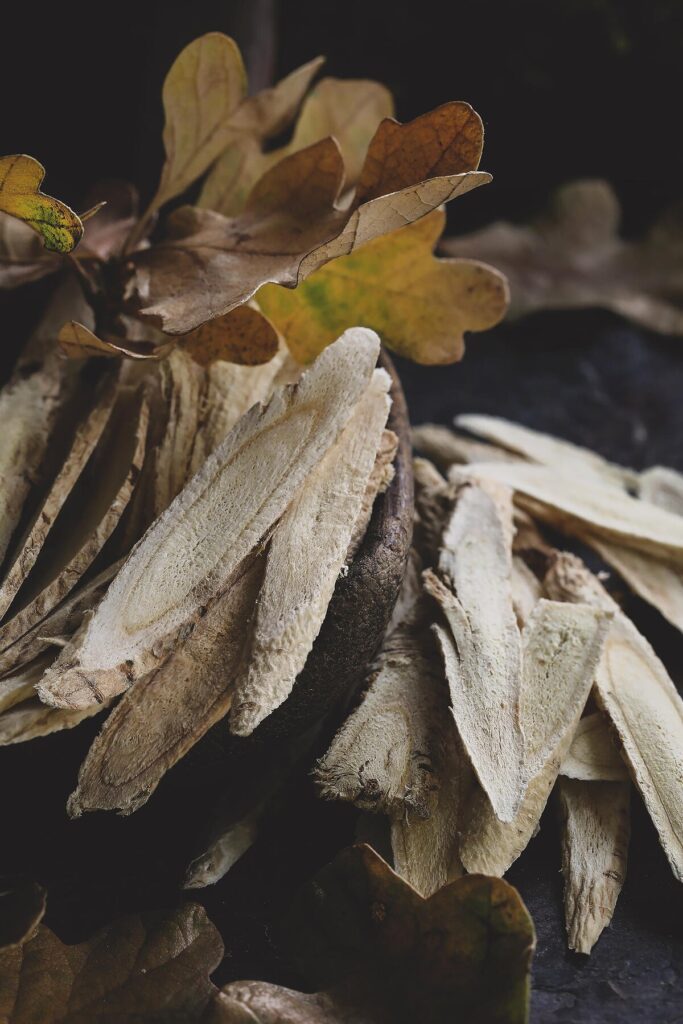
ASTRAGALUS ROOT
Astragalus is included in traditional Chinese medicine formulas to tonify the Qi and Blood, boost energy, strengthen immunity*, and nourish internal resilience to withstand unwanted environmental factors. Throw 6-12 astragalus root slices into your stews, allowing them to simmer and decoct for at least 30 minutes. Remove astragalus before serving, and enjoy the slightly sweet, gently warming, and lightly moistening broth with a dash of fresh ginger, some mushroom slices, and your protein of choice.
*** NOTE: If you’re already ill or are taking immunosuppressant medications, then check with your healthcare practitioner first before working with astragalus.
SHIITAKE MUSHROOMS
With its delicate umami flavor, meat-like texture, and malleability, shiitake can often at times be a staple in many plant-based + vegan households. Alongside ginger, soy sauce, and sesame oil, you can whip up a stir-fry, soup, or sauce + enjoy shiitake in a variety of ways. Keep a jar of easily accessible dried shiitake in your kitchen cabinet. Rehydrate for 10 minutes, then either slice thinly for stir-fries or add whole into soups. Fresh shiitake is delicious too and is available at some groceries, or as a joyous addition to forest-style gardens (enjoy your own foraging!).
A balancing and nourishing adaptogen + rich in vitamins, polysaccharides, and protein. Shiitakes are delicious thinly sliced in miso soup, cooked at length in nourishing broths, and tossed into stir-fries + now you can too!
GINGER ROOT
Ginger (rhizome, scientifically speaking!) lives in my kitchen. Throw large ginger slices into cooking and remove before serving, or finely chop and grate ginger into stir-fries for small bursts of flavor. Fresh ginger is available in most grocery stores but dried or powdered ginger is also convenient to keep on hand.
Warming, and drying, ginger is a digestive and circulatory stimulant commonly included in most traditional Chinese medicine formulas. Fun culinary fact: Fresh ginger is considered warmer and more moistening, whereas dried ginger is hotter and more drying.
GOJI BERRIES
A small handful of goji berries really add a bit of sweet nourishment into soups, same as astragalus and the Jujube dates. I suggest to toss in at the end of stir-fries to keep nutritional integrity, goji berries can add a little sweet kick, color burst, and of course, nutrient boost.
My favorite fact is that in Chinese medicine, they enrich Yin, nourish Blood, and mildly tonify Yang! Enjoy raw, steeped as tea, or incorporated into culinary recipes such as trail mix or nourishing autumn stews.
*** NOTE: If you’re sensitive to nightshade family plants or are already sick, then do not consume goji berries unless you consult with your healthcare practitioner prior to use.
DONG QUAI ROOT
Dong quai has a very specific flavor. In Chinese medicine, dong quai tonifies and gently invigorates the Blood, lightly moistening dryness, nourishing deficiency, and moving stagnation. Dong quai is often employed in Chinese herbal formulas to support female reproductive health, this was one of the base ingredients when I was working with my herbalist on my personal feminine + deficiency protocols!
For a soup, it is typically blended with chicken, ginger, goji berries, shiitake mushrooms, jujube dates, soy sauce, and sesame oil for a nourishing and supportive postpartum soup. And of COURSE you can substitute tofu or another protein for the chicken. For a basic stew, add 3-10 dried slices and let it mesh with your stew for at least 30 minutes. Remove roots before serving – because you may prefer to leave that one out of your digestive tract.
*** NOTE: Do not use dong quai during pregnancy or with blood-thinning medications, unless supervised by a qualified healthcare practitioner.
KOMBU SEAWEED
I love ALL seaweed, but there is something specifically dear about kombu. It’s a earthly staple and here’s why. It is easy to keep and easy to cook, kombu welcomes a slightly salty and oceanic flavor and energy to otherwise mundane meals. Cook with daikon, mushrooms, carrots, cabbage, potatoes, other hearty vegetables, and your favorite proteins. To prepare, lightly wash kombu with cool water, cutting or breaking it into thumb-sized pieces that will fit nicely into a pot. ** TIP: Soak for five minutes, then add close to the end of cooking your stew. Kombu makes a delicious soup stock, soaked in either cold or hot water for at least one hour, then strained.
*** NOTE: If you have fish or shellfish allergies, then do not consume kombu. Consult with a qualified healthcare practitioner before using herbal products, particularly if you are pregnant, nursing, or taking medications.

